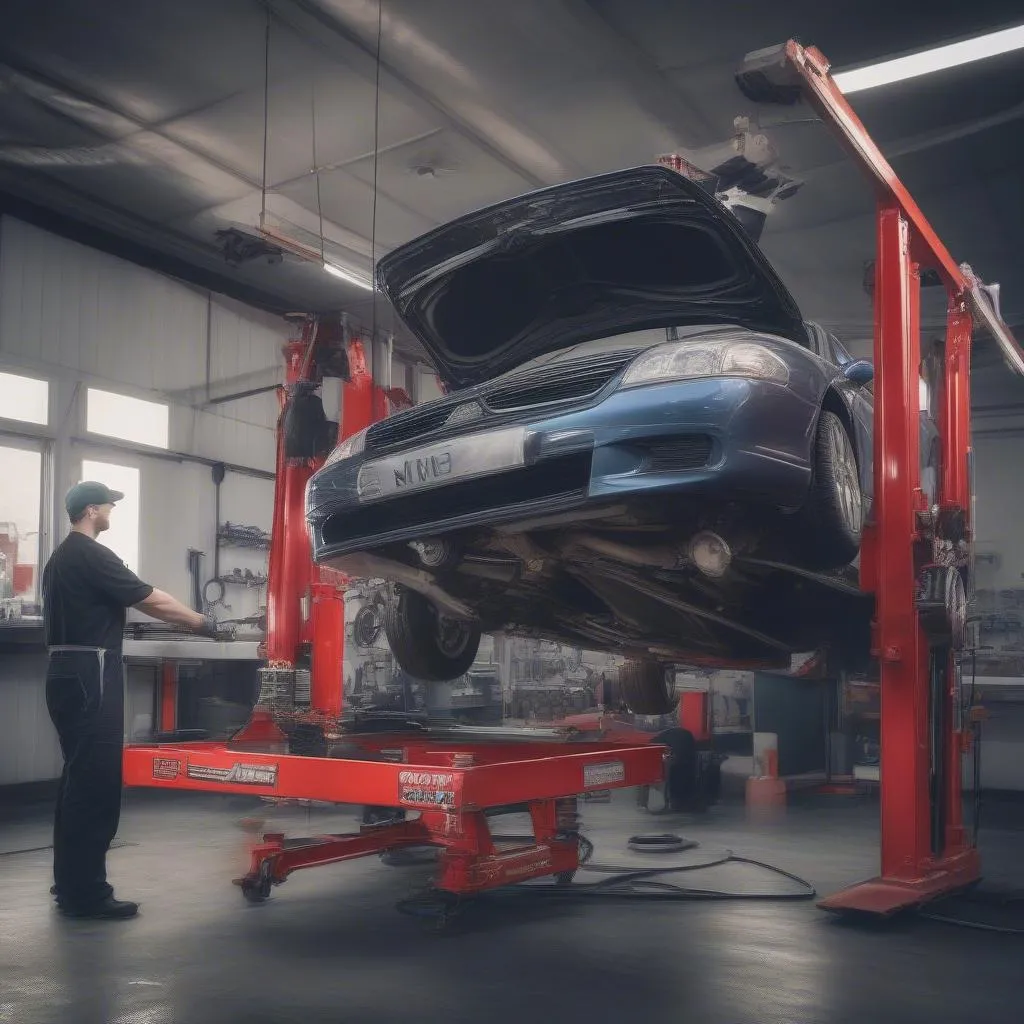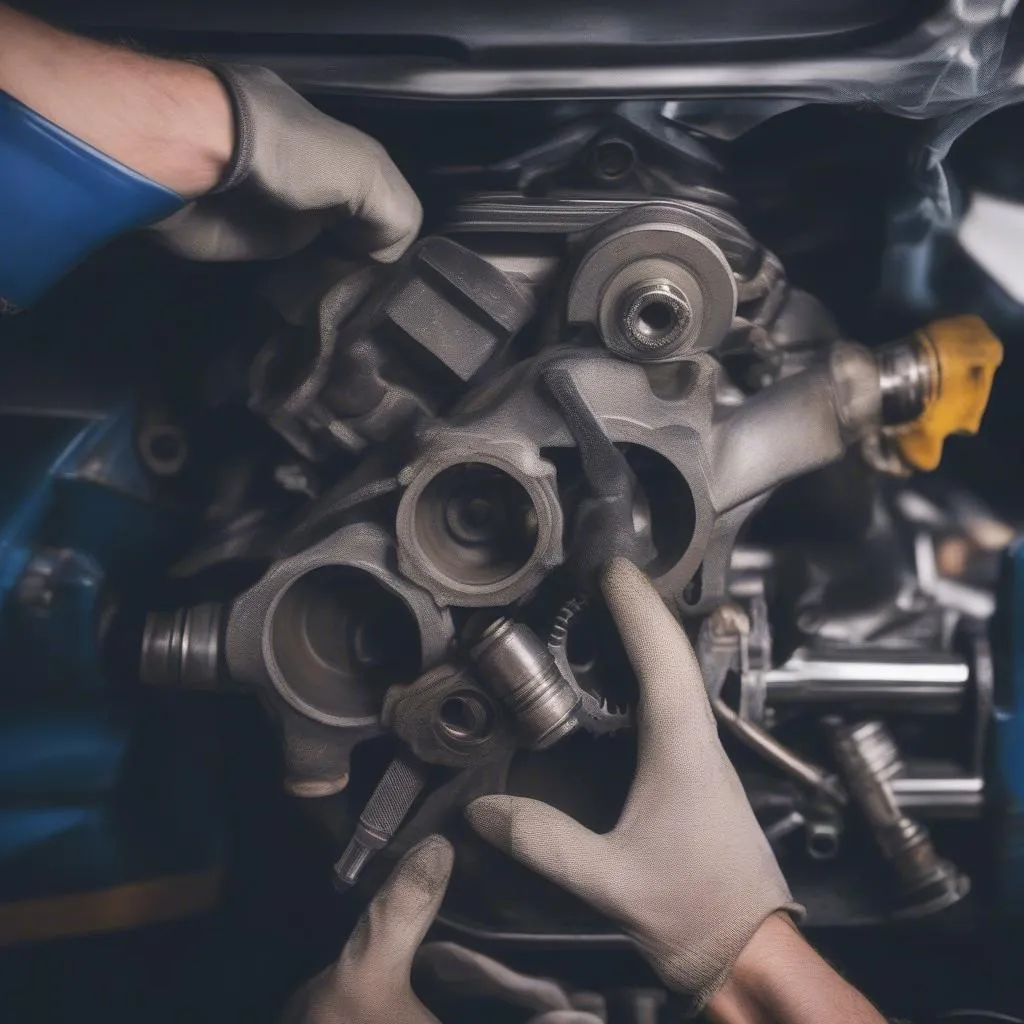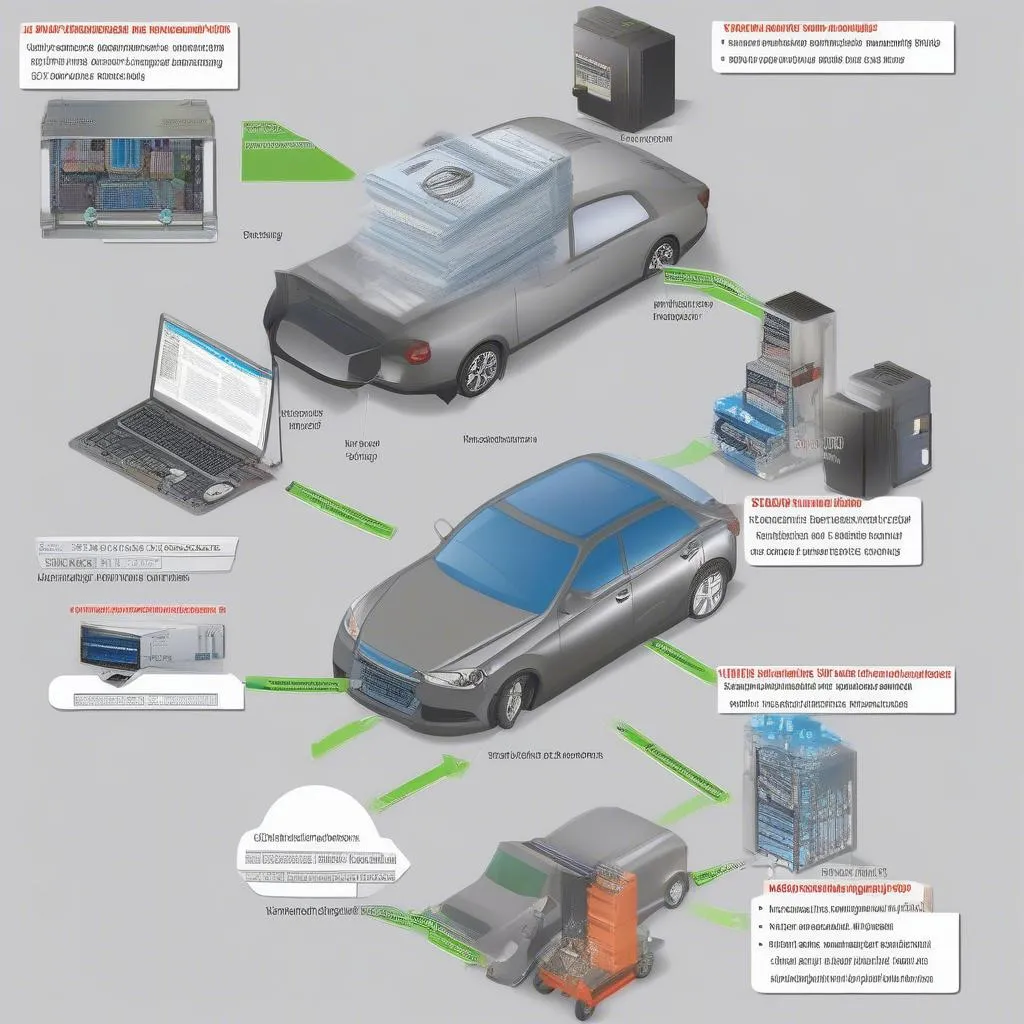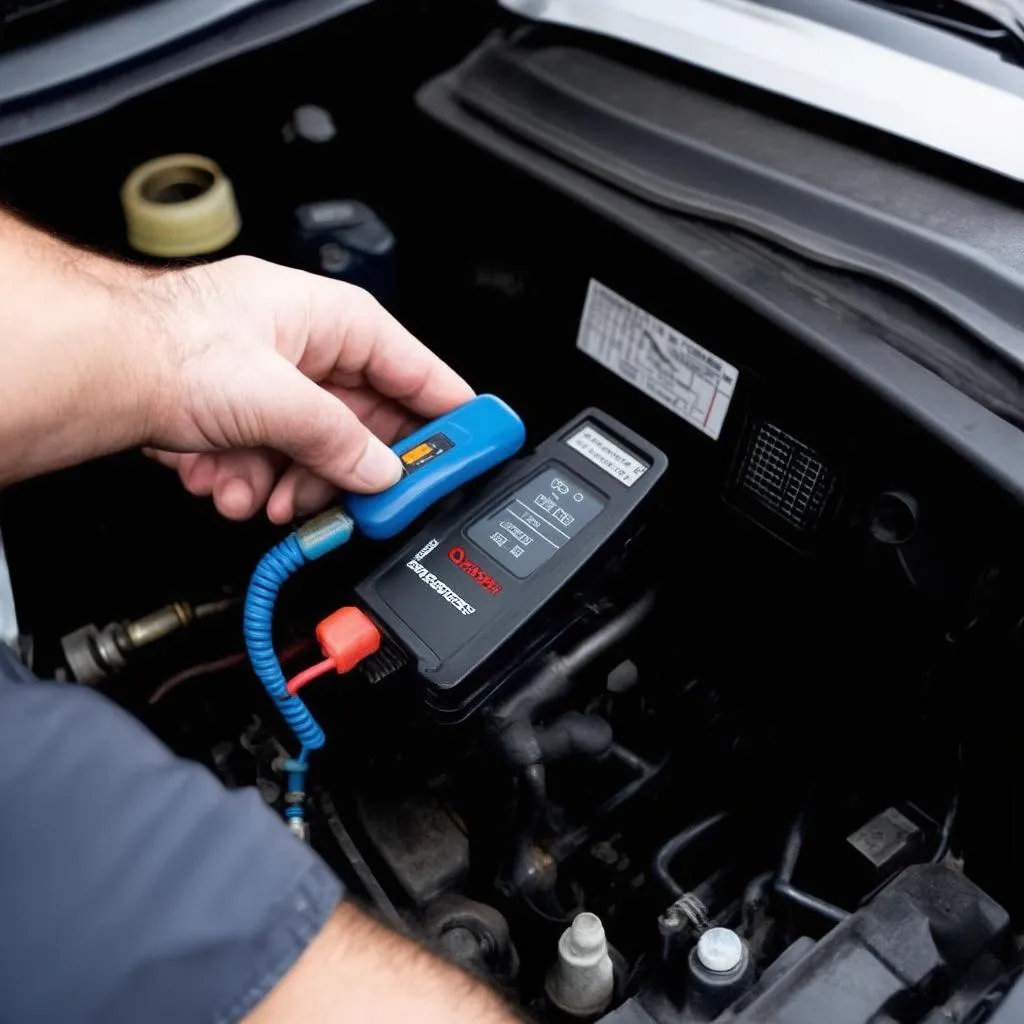Owning a 2000 Mercedes ML320 can be a rewarding experience. However, like any vehicle, it can encounter issues over time. One common problem reported by owners is a “bad rod.” This issue, if left unattended, can lead to significant engine damage and costly repairs. This comprehensive guide will walk you through the causes, symptoms, and solutions for a bad rod in your 2000 Mercedes ML320.
Understanding the Issue: What is a Bad Rod?
A “bad rod,” also known as a connecting rod failure, refers to a critical malfunction within your engine. The connecting rods are responsible for transferring power from the pistons to the crankshaft, facilitating the engine’s rotational force that ultimately drives your wheels. When a connecting rod fails, it can cause catastrophic internal damage to your engine.
Identifying a Bad Rod in your 2000 Mercedes ML320
Detecting a bad rod early is crucial to prevent further damage. Here are some common signs to watch out for:
- Knocking Sound from the Engine: A distinct knocking or banging sound, particularly when accelerating or decelerating, is a telltale sign of a potential connecting rod issue. This sound often originates from the lower portion of the engine and increases in intensity as the engine speed rises.
- Low Oil Pressure: Your engine oil plays a crucial role in lubricating the connecting rods. If you notice a significant drop in oil pressure, it could indicate a problem with the rods or bearings.
- Engine Misfires or Loss of Power: A failing connecting rod can disrupt the engine’s combustion cycle, leading to misfires, rough idling, and a noticeable decrease in engine power.
- Metal Shavings in the Oil: When a connecting rod breaks or suffers severe wear, it can release metal debris into the engine oil. Checking your oil for metallic particles during an oil change is essential.
Gathering the Necessary Tools for Repair
Addressing a bad rod requires specialized tools and equipment. If you’re comfortable undertaking this repair yourself, ensure you have the following:
- Socket Set and Torque Wrench: These are essential for removing and tightening bolts to the manufacturer’s specifications.
- Engine Hoist: Depending on the extent of the damage, you might need an engine hoist to remove the engine from your ML320 for repair or replacement.
- Engine Stand: An engine stand will securely hold the engine in place, allowing you to work on it comfortably.
- Specialized Engine Tools: These may include piston ring compressors, bearing removal tools, and other specialized tools depending on the specific repairs needed.
Repairing a Bad Rod: A Step-by-Step Guide
Repairing a bad rod is a complex procedure best left to experienced mechanics, especially for those unfamiliar with engine repair. However, understanding the steps involved can help you grasp the complexity and potential costs:
- Engine Removal: The engine will likely need to be partially or fully removed from the vehicle to access the damaged connecting rod.
- Disassembly: The mechanic will disassemble the engine to reach the crankshaft, pistons, and connecting rods.
- Inspection: A thorough inspection of all engine components is crucial to assess the extent of the damage. This will help determine if a repair or a complete engine replacement is necessary.
- Connecting Rod Replacement: If the damage is limited to the connecting rod, it will be replaced with a new one.
- Bearing Replacement: Connecting rod bearings, which reduce friction between components, will also be replaced to ensure proper function.
- Reassembly and Reinstallation: The engine will be carefully reassembled, ensuring all components are torqued to specifications. Finally, the engine will be reinstalled in the vehicle.
 Engine Removal
Engine Removal
Frequently Asked Questions About 2000 Mercedes ML320 Engine Problems
Q: How much does it cost to fix a bad rod in a 2000 Mercedes ML320?
A: The cost can vary significantly depending on the severity of the damage, labor costs in your area, and whether you choose to repair or replace the engine. It’s best to consult with a qualified mechanic for an accurate estimate.
Q: Can a bad rod be fixed without removing the engine?
A: In most cases, accessing and repairing a bad rod requires at least partial engine removal to provide the necessary clearance and access for the mechanic.
Q: Can I drive my 2000 Mercedes ML320 with a bad rod?
A: It is highly discouraged to drive your vehicle with a suspected bad rod. Doing so can cause catastrophic engine damage, turning a potentially repairable situation into a costly engine replacement.
Q: Can I use a diagnostic tool to identify a bad rod?
A: While a diagnostic tool like those offered by CARDIAGTECH can identify engine misfires or other related issues, it might not directly diagnose a bad rod. A physical inspection by a qualified mechanic is crucial for accurate diagnosis.
 Engine Inspection
Engine Inspection
Conclusion
A bad rod in your 2000 Mercedes ML320 is a serious issue that demands immediate attention. By understanding the causes, recognizing the symptoms, and knowing the repair process, you can make informed decisions about addressing this problem should it arise. Remember, early detection and professional repair are crucial to prevent further engine damage and ensure the longevity of your Mercedes.


